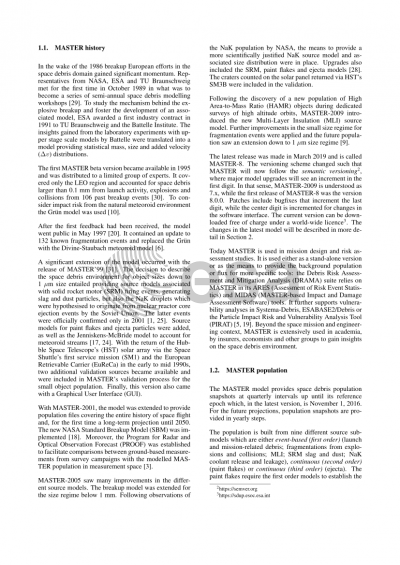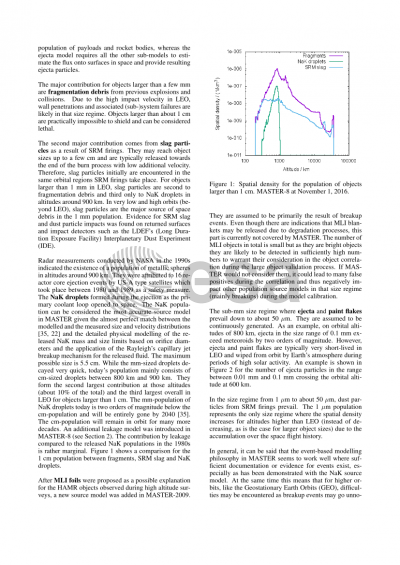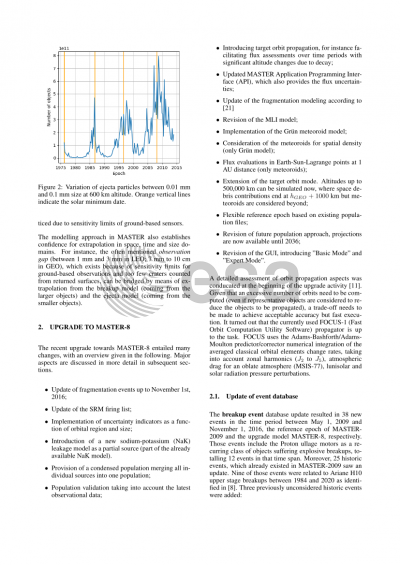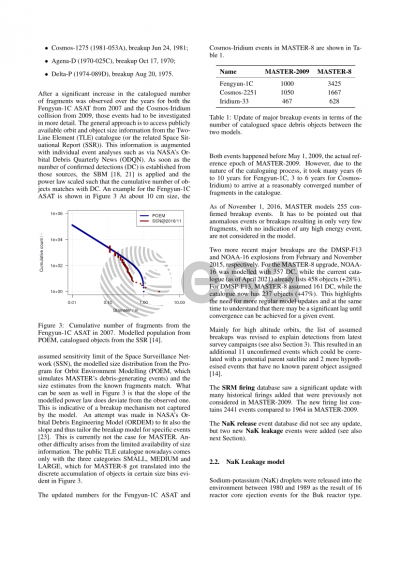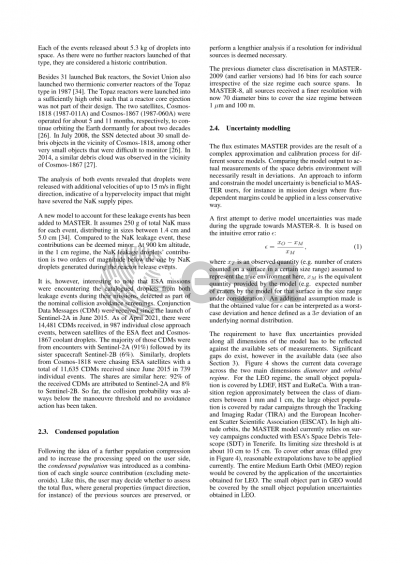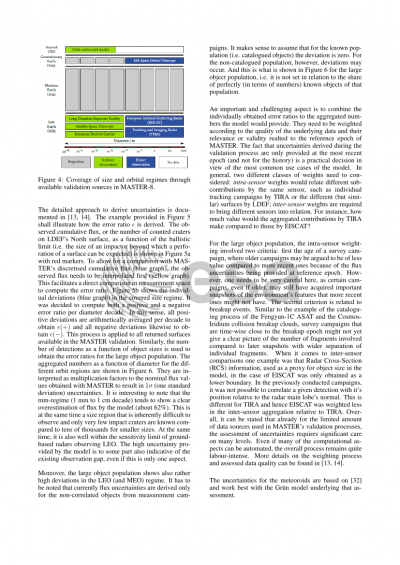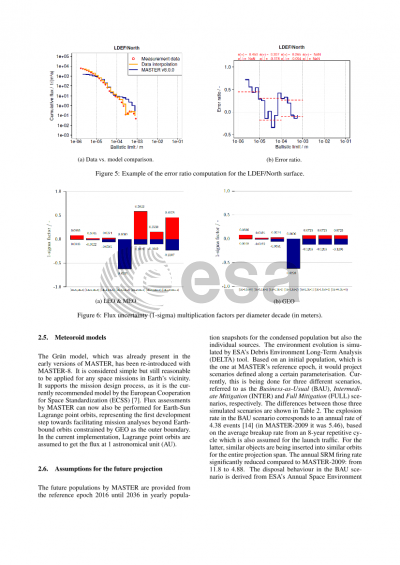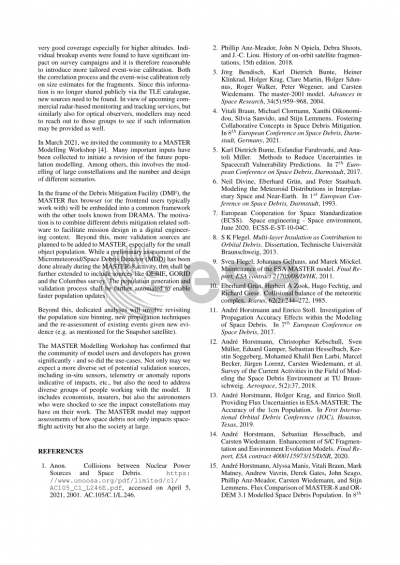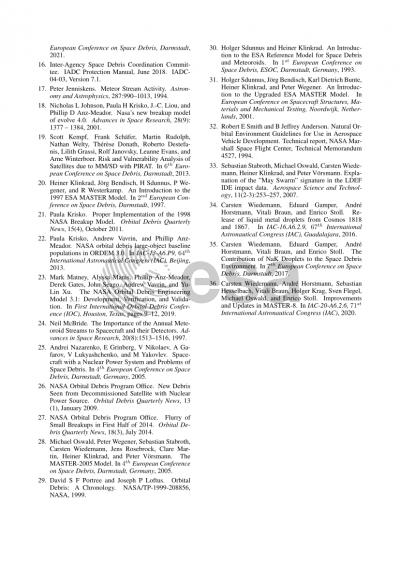Document details

Abstract
The European space debris environment model MASTER (Meteoroid And Space debris Terrestrial Environment Reference) is being developed at ESA (European Space Agency) since the early 1990s and needs to be continuously maintained due to the dynamic nature of the space debris environment. The target orbit flux estimates provided by MASTER are used in mission design and risk analyses by a broad community.
The recent upgrade from MASTER-2009 to MASTER-8 saw many model improvements along with an update of the reference population based on newly added measurement campaigns for the model validation.
In this paper, the context for the relevance of MASTER is presented, which results in the associated needs and use cases driving the continuous design of the model. The way the individual source models are developed, modified, verified and validated is demonstrated mainly along the instructive examples in the transition from MASTER-2009 to MASTER-8. This includes the revision of past breakup events, the addition and calibration of new events and the addition of an entirely new model to consider NaK leakage events. Major differences in flux estimates between MASTER-2009 and MASTER-8 are highlighted.
Moreover, the approach to derive flux uncertainties in the model is described, including its potential towards facilitating additional automation in the validation process. The latter may see significant changes with many newly upcoming ground- and space-based sensors and in-situ measurements that shall be considered in later versions of the model. Further use cases that are already partly addressed include analyses of space missions in Lagrange point orbits or even missions on escape trajectories transiting through the Earth’s space debris environment.
An important aspect for many mission designs is MASTER’s capability to provide flux projections for future dates. It is therefore important to prudently design a potential future scenario for the space debris environment, which entails justifiable model assumptions and is backed by a high degree of acceptance within the community. Potential improvements in that direction shall be outlined in this paper.
Finally, an outlook will be provided on how MASTER is envisioned to become part of ESA’s Debris Mitigation Facility (DMF).
Preview

